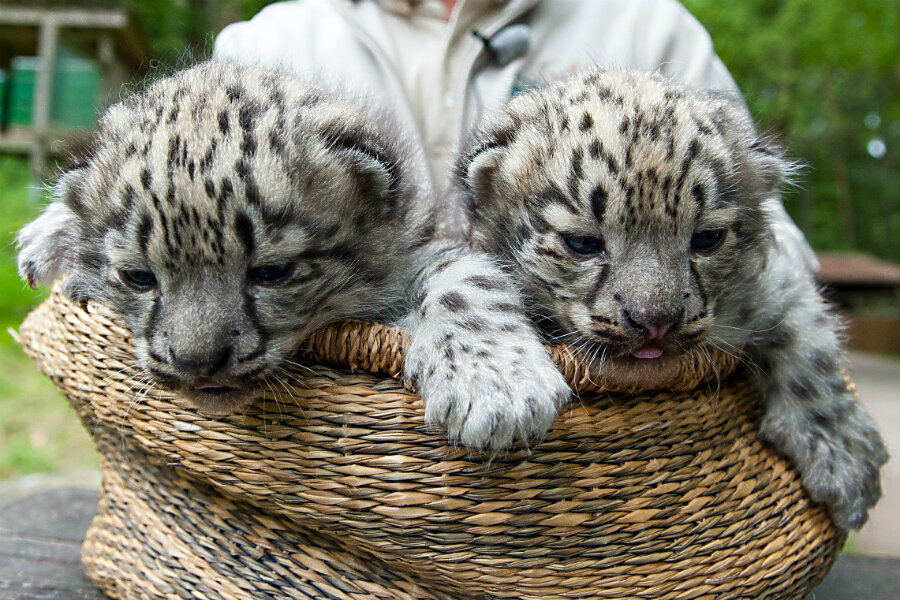Rare (and adorable!) snow leopard cubs born at Chicago zoo
Loading...
Brookfield Zoo in Chicago, Illinois announced Friday the birth of two female snow leopard cubs.
The two cubs, each weighing about 10 pounds, were born on June 16 and have been growing steadily and bonding with their mom, zoo officials said in a news release. The cubs will make their public debut in mid-October.
This is exciting news for conservationists, as snow leopards are listed as endangered species by the International Union for Conservation and Nature (IUCN), and like most big cats, their population is shrinking fast.
Fewer than 6,400 snow leopards survive in the wild, and they are spread across 12 countries, reports the World Wildlife Fund. Probably no more than 2,500 are of breeding age, say experts with the IUCN.
Snow leopards' numbers are declining because of “poaching for medicinal markets and hides, depletion of their prey base, retribution killing following livestock losses, residential and commercial development, and civil unrest,” according to the Chicago Zoological Society.
Snow leopards are found in the frigid, mountainous regions of central Asia, including Afghanistan, Pakistan, India, Nepal, Bhutan, Uzbekistan, Kazakhstan, Kyrgyz Republic, Tajikistan, China, Mongolia, and Russia.
The big cats have many adaptations to their mountain homes. For instance, snow leopards change their fur with the season. When it is winter, their furs are thick and white, which both serves as camouflage and helps keep them warm. By summer, they have shed their winter coats and grown a fine, yellow-grey fur to keep up with the heat, the WWF says.
In addition, snow leopards have longer tails than their cousins, the other big cats, reaching more than three feet long. Not only do they help the leopards balance on steep, rocky slopes, they also help with protection against the cold, since the leopards can wrap their long tails around their bodies while resting.
According to the Chicago Zoological Society, there are just 145 snow leopards living at 63 institutions in North America. Each snow leopard has a unique pattern of spots.
The cubs were born to 4-year-old Sarani and her 5-year-old mate, Sabu. The pair arrived at Brookfield Zoo in October 2011 from Tautphaus Park Zoo in Idaho Falls, Idaho, and Cape May County Park & Zoo in Cape May Court House, New Jersey, respectively.
News of their birth comes as animal lovers are still celebrating an announcement that the surviving giant panda cub born at the US National Zoo last Saturday is healthy and putting on weight.





